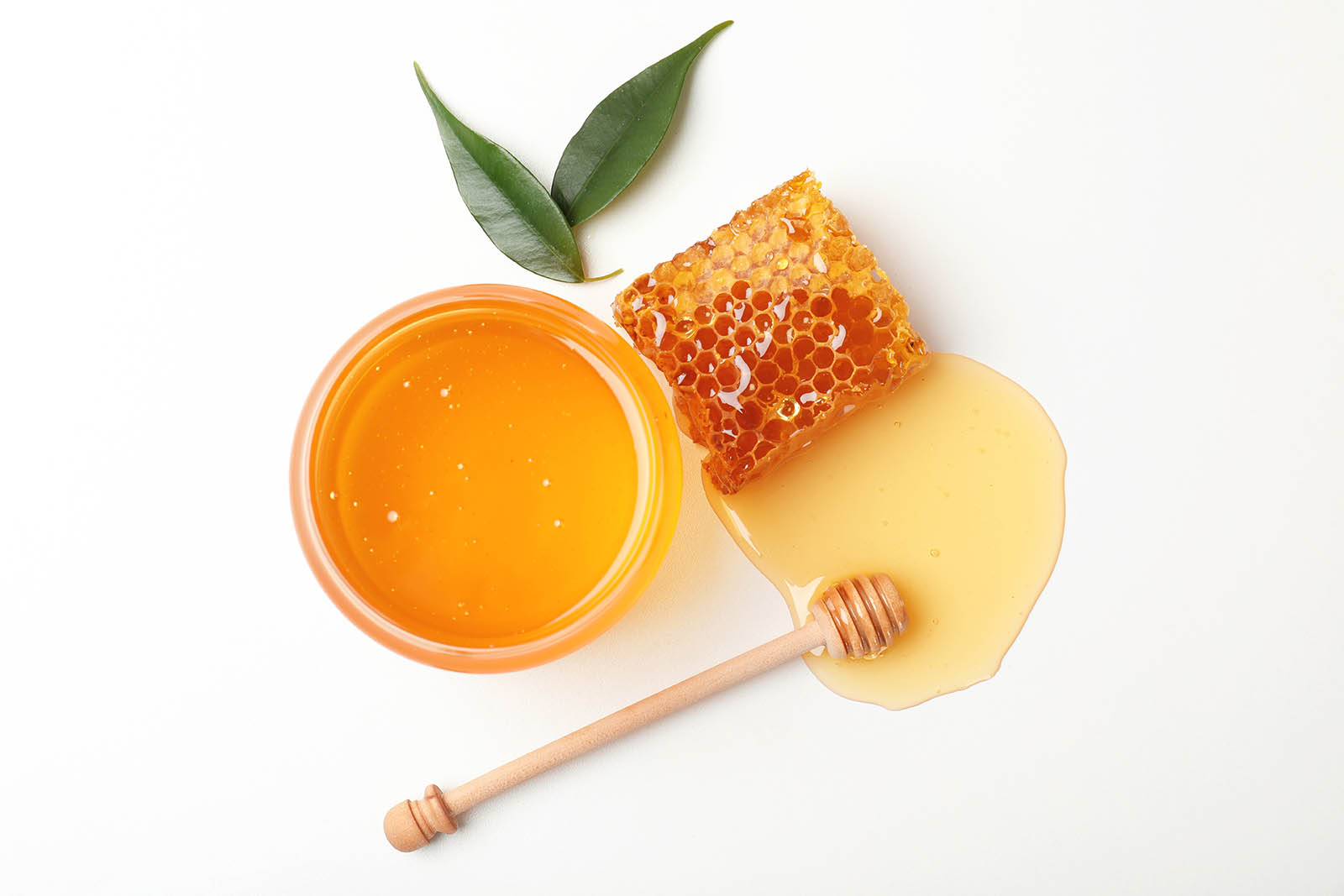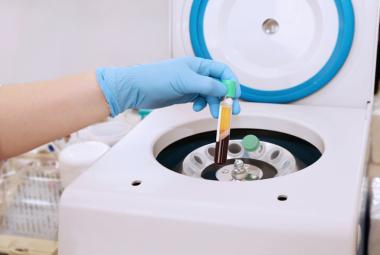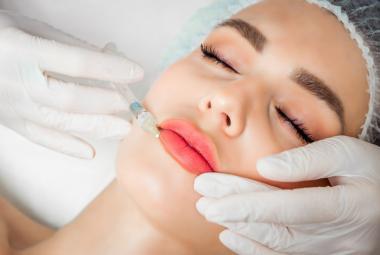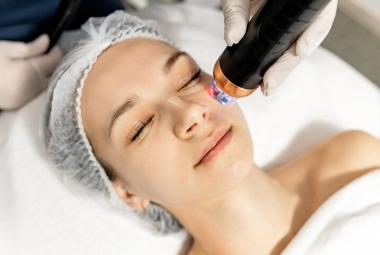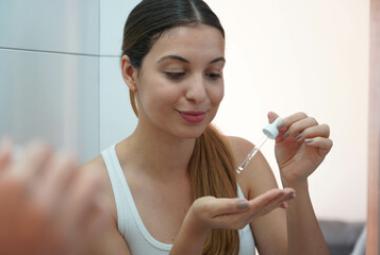Nipple pain is an extremely common phenomenon in breastfeeding mothers, and some studies suggest that it affects up to 96% of breastfeeding women 1. One of the most common causes of pain is due to dry or cracked nipples, which are often due to improper latching, engorged breasts, or breast pump misuse. Though various substances and techniques have been developed to help reduce the pain associated with cracked nipples, many women continue to face this issue and ultimately stop breastfeeding due to the pain. Recently, there has been a growing interest in the use of medical-grade honey, like MediHoney, to promote the healing of cracked and painful nipples. But infants are not recommended to consume honey until after they are a year old due to the risk of infant botulism, a potentially lethal condition caused by bacteria that is found in honey. So, is medical-grade honey safe? The short answer is yes, probably. In fact, the manufacturer of MediHoney created an infographic that specifically states that it is safe for use in breastfeeding moms. They recommend that the nipple be cleansed with warm water after nursing to remove the baby’s saliva before application of MediHoney to the nipple and areola. They then recommend placing a nursing pad over the nipple and wearing a bra to help secure the pad. Prior to nursing, they recommend cleansing the nipple with a warm washcloth to clean off any residual MediHoney 2. However, there have not been any scientific studies that have researched the safety of this practice.
Why is honey a concern for infants?
Infant botulism is a rare but potentially life-threatening neuromuscular disorder that may cause weakness, loss of muscle tone, paralysis, and ultimately death in infants. It is caused by the Clostridium botulinum (C. botulinum) bacteria or its spores, and it affects 70-100 infants each year in the United States 3. In infant botulism, infants ingest C. botulinum spores through food or dirt, which then enter their gastrointestinal (GI) tract and release toxins. Symptoms of infant botulism are below. Infants are particularly susceptible to food-borne botulism because they have immature GI tracts that are not able to prevent the bacteria from producing toxins. Wounds can also become infected with C. botulinum and cause wound botulism; this occurs most commonly in people who use intravenous drugs 4. Though botulism is often associated with honey, C. botulinum spores can also be found in improperly home-canned foods, in soil, on the surfaces of fruits and vegetables, and in seafood. In fact, in a majority of cases of infant botulism, the source of the bacteria or spores is not identified 3,5.
What is Medical-Grade Honey?
Honey has been used for medicinal purposes for thousands of years, with its earliest documented use in ancient scriptures from the Stone Age (circa 6000BC) 6. Since that time, it has been shown that honey contains antibacterial, anti-inflammatory, and antiviral properties that, in combination with its moisture-locking property, promote wound healing and prevent infections 6. Manuka honey, which is derived from the nectar of honey bees that forage the Manuka tree (Leptospermum scoparium), is well-known for its antibacterial and antioxidant properties 7,8. Medical-grade honey refers to honey that has been sterilized via gamma radiation to ensure the inactivation of bacteria and spores from the honey, including C. botulinum spores 9,10. MediHoney, TheraHoney, and First Honey are all examples of medical-grade Manuka honey, and they are all indicated for wound healing. These brands are likely similar, but there is no data comparing them. They come in a variety of formulations, including gels, pastes, and sheets. In this article, we will focus on the use of MediHoney as it has the most clinical data evaluating its use in infants.
Can Medical-Grade Honey be used safely in infants?
There are multiple scientific studies that have demonstrated that MediHoney is safe and effective for the treatment of wounds in neonates, infants, and children up to age 18 10-13. In one of the largest published studies, 121 wounds were treated with MediHoney on 115 neonatal and pediatric patients. The study showed that MediHoney was effective in closing over 75% of wounds, and the only complication described in the study was a stinging sensation upon application of the honey in two patients. The discomfort, however, was not significant enough to prevent further application 10.
There is one published case report in which an infant developed paralysis almost five days after the application of MediHoney to her umbilical stump wound. The author of the case report, Tamrin, claims that the medical facility did not have the proper laboratory equipment to isolate C. botulinum from the patient’s wound nor from the MediHoney sample. Thus, Tamrin utilized the patient’s clinical presentation, muscle testing, known as electromyography, and “ruling out other differential diagnoses” to come to the diagnosis of wound botulism. Tamrin concluded that the use of medical-grade honey could “possibly be banned for infants” as C. botulinum spores may be resistant to the sterilization process used to produce MediHoney 14. It is worth noting, however, that since this case report was published, a Letter to the Editor has also been written by Cooper, calling into question the validity of the diagnosis of botulism in the case report. In the Letter, Cooper points out that Tamrin provides little information regarding how alternative diagnoses were ruled out prior to arriving at the diagnosis of botulism without isolating the organism. Cooper also points out multiple discrepancies between claims made by Tamrin and the resources cited in support of these claims 15.
Medical-Grade Honey, Nipples, and Breastfeeding Infants
Tamrin’s case report is the only documented case of infant botulism that has been tied to medical-grade honey. Due to questions regarding the validity of the diagnosis and the large amount of data in support of MediHoney’s safety for use on infants, it is likely that MediHoney is safe for use on wounds in infants. Its use on nipples while breastfeeding, however, is not as well-researched. In fact, there are no published studies that have investigated its safety on nipples while breastfeeding. Oral infant exposure to MediHoney due to skin-to-skin transfer during breastfeeding is likely less risky than MediHoney applied to an infant’s open wound. Online lactation specialists regularly recommend over-the-counter MediHoney for use on sore and cracked nipples. If you choose to use MediHoney to help relieve nipple pain associated with cracked nipples, it is recommended that you follow the directions provided by the manufacturer and closely monitor your infant for signs and symptoms of botulism (see below).
Because cracked nipples are often caused by improper latching by the infant, a meeting with a lactation consultant to ensure proper nursing technique is a great first step in treating and preventing this condition. Additionally, applying lanolin, diluted peppermint oil, or a small amount of breast milk to the nipple after feeding is recommended to keep your nipples hydrated; just be sure to wipe off any substances prior to nursing. Allowing your nipples to air dry and wearing breast shells between feedings are also recommended to provide additional support and help soothe nipple pain 17. We recommend that you start with these techniques before using MediHoney. If you are still experiencing nipple pain due to dryness and cracking, then talk to your healthcare provider about using MediHoney.
What do I do if I think my infant has botulism?
Common signs and symptoms of infant botulism include constipation, decreased energy or activity, decreased appetite and difficulty feeding, weak cry, difficulty breathing, and loss of muscle tone, typically starting from the head and neck and progressing downward 3,18. If you suspect your infant may have botulism, take your infant to the nearest Emergency Department immediately. If botulism is suspected, the physician will likely run a series of tests to confirm the diagnosis and rule out other diagnoses. These tests may include collecting a stool sample, performing blood tests, collecting a sample of cerebrospinal fluid, and muscle testing. If the diagnosis is confirmed, the physician will proceed with treatment which includes giving your infant anti-botulism antibodies harvested from donors who have been immunized against botulism (BIG-IV or BabyBIG) 3. The earlier that treatment is initiated, the better chances your infant has for a full recovery, so it is advised that you take your infant to the Emergency Department as soon as symptoms arise. With proper treatment, most infants recover in weeks to months.
Julie Chugh, MD Candidate, Class of 2024
Kaytlin Krutsch, PharmD, BCPS
References:
1. Ziemer MM, Paone JP, Schupay J, Cole E: Methods to prevent and manage nipple pain in breastfeeding women. West J Nurs Res. 1990, 12:732-743; discussion 743-734. 10.1177/019394599001200603
2. Use of MediHoney Paste Dressing by Breast-Feeding Mothers for the Management of Sore or Cracked Nipples. 2018.
3. Rosow LK, Strober JB: Infant botulism: review and clinical update. Pediatr Neurol. 2015, 52:487-492. 10.1016/j.pediatrneurol.2015.01.006
4. Neeki MM, Dong F, Emond C, et al.: Early diagnosis and critical management of wound botulism in the emergency department: a single center experience and literature review. International Journal of Emergency Medicine. 2021, 14:56. 10.1186/s12245-021-00375-4
5. Arnon SS, Midura TF, Clay SA, Wood RM, Chin J: Infant botulism. Epidemiological, clinical, and laboratory aspects. Jama. 1977, 237:1946-1951. 10.1001/jama.237.18.1946
6. Bittmann S, Luchter E, Thiel M, Kameda G, Hanano R, Längler A: Does honey have a role in paediatric wound management? Br J Nurs. 2010, 19:S19-20, s22, s24. 10.12968/bjon.2010.19.Sup5.77704
7. Liu MY, Cokcetin NN, Lu J, et al.: Rifampicin-Manuka Honey Combinations Are Superior to Other Antibiotic-Manuka Honey Combinations in Eradicating Staphylococcus aureus Biofilms. Front Microbiol. 2017, 8:2653. 10.3389/fmicb.2017.02653
8. Alvarez-Suarez JM, Gasparrini M, Forbes-Hernández TY, Mazzoni L, Giampieri F: The Composition and Biological Activity of Honey: A Focus on Manuka Honey. Foods. 2014, 3:420-432. 10.3390/foods3030420
9. Acton C: Medihoney: a complete wound bed preparation product. Br J Nurs. 2008, 17:S44, s46-48. 10.12968/bjon.2008.17.Sup5.29651
10. Amaya R: Safety and efficacy of active Leptospermum honey in neonatal and paediatric wound debridement. J Wound Care. 2015, 24:95; 97-103. 10.12968/jowc.2015.24.3.95
11. Boyar V, Handa D, Clemens K, Shimborske D: Clinical experience with Leptospermum honey use for treatment of hard to heal neonatal wounds: case series. J Perinatol. 2014, 34:161-163. 10.1038/jp.2013.158
12. Parizad N, Hajimohammadi K, Hassanpour A, Goli R: Treating surgical site infection by honey antibacterial wound dressing in a neonate: a case report. Br J Nurs. 2022, 31:S8-s14. 10.12968/bjon.2022.31.4.S8
13. Simon A, Sofka K, Wiszniewsky G, Blaser G, Bode U, Fleischhack G: Wound care with antibacterial honey (Medihoney) in pediatric hematology–oncology. Supportive Care in Cancer. 2006, 14:91-97. 10.1007/s00520-005-0874-8
14. Mohd Tamrin MI: The dilemma of diagnosing wound botulism in an infant: A rare case of paralysis with topical application of honey. Int J Infect Dis. 2020, 95:157-159. 10.1016/j.ijid.2020.03.044
15. Cooper R, White R: Re: The dilemma of diagnosing wound botulism in an infant. Int J Infect Dis. 2021, 104:181-182. 10.1016/j.ijid.2020.12.036
16. Dilena R, Pozzato M, Baselli L, et al.: Infant Botulism: Checklist for Timely Clinical Diagnosis and New Possible Risk Factors Originated from a Case Report and Literature Review. Toxins (Basel). 2021, 13. 10.3390/toxins13120860
17. Nipple Fissure. Accessed: August 11, 2023: https://my.clevelandclinic.org/health/diseases/22605-nipple-fissure.
18. Jin J: What Is Botulism? Jama. 2023, 330:90. 10.1001/jama.2023.8085

